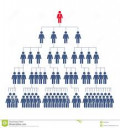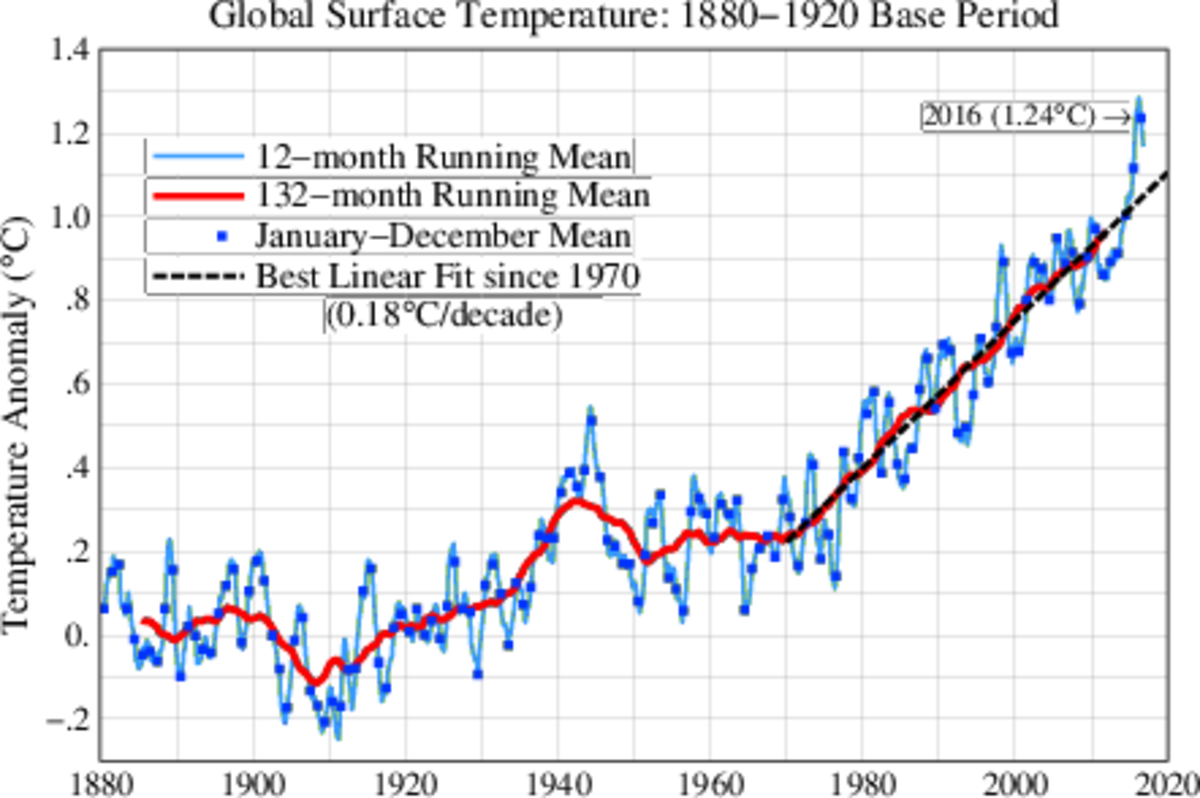Taking The Bus (vs) Compared To Driving A car - Its Effects On Pollution, Global Warming & Our Health
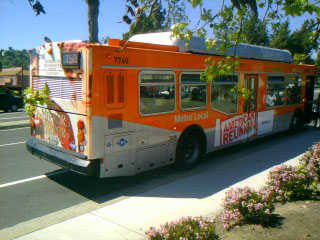
The Facts
What mistakes do you make by paying high gas prices? On top of the bigger hole on your pocket, this article will discuss its harmful effects on climate change, global warming, mental stress, and physical fitness. This means your overall health needs your urgent attention right now.
In February 2012, gas prices are soaring though the roof, again! I explored the possibility of using other means of transportation. The common option is to take the bus. My next question is, "Do I keep driving my car despite the pain in the pump?"
Bus is a public transport that is either managed by a private company or by a government entity. The bus fare ranges from $0.25-$3.00. I picked the average amount at $1.50 more or less plus change. Gas in this article means the gasoline that is used by an average car. The term gas will represent the car used in the ordinary commute from point A to point B.
In the process of my research, I discovered several facts that affects our daily lives. I will present to you my study on the four costly mistakes we do by comparing the bus versus gas.
The 4 costly mistakes are:
1) Carbon Dioxide Emission and its ultra-harmful effects
2) Mental Stress
3) Physical Inactivity
4) Car Accident and its Aftermath
Each one of us have different economic and health perception regarding the way we commute daily. We travel to work, appointments, school, mall, grocery, etc. Considering the high gas prices and the 4 costly mistakes that is right in front of you, which one suits you better this time, commuting by bus or driving your car?
2012
| Level of CO2
| 2013
| Level of CO2
|
|---|---|---|---|
Jan
| 393.09
| Jan
| 395.55
|
Feb
| 393.65
| Feb
| 396.80
|
Mar
| 394.45
| Mar
| ?
|
Apr
| 396.18
| Apr
| 398.35
|
May
| 396.78
| May
| 399.89
|
Jun
| ?
| Jun
| 398.58
|
Jul
| 394.49
| Jul
| ?
|
Aug
| 392.41
| Aug
| ?
|
Sep
| 391.07
| Sep
| ?
|
Oct
| 391.03
| Oct
| ?
|
Nov
| 392.92
| Nov
| ?
|
Dec
| 394.39
| Dec
| ?
|
The safety limit is only at 350 ppm for outdoor air level
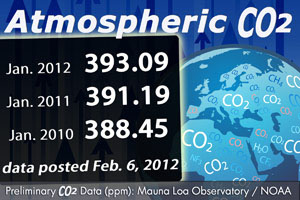
The Costly Mistakes
1) Carbon Dioxide Emission and its ultra-harmful effects.
Carbon dioxide (CO2) is a toxic chemical to humans. Excessive emission of CO2 has a huge impact both in our health and in our environment.
How much CO2 does a bus and an average car emit per kilometer? FirstGroup plc(n.d.) states that Carbon Dioxide from bus emits 89g of CO2 per km while an average car emits 133g per km (.625 mile). Therefore, the average car emits fifty percent (50%) more CO2 per mile than the bus!
At the beginning of the 21st century, the world population of cars and light trucks totaled about 550 million, with annual output of approximately 50 million (Volti, R., 2004). That is a lot of cars that causes pollution to planet earth. If we do the math, millions of CO2 grams per mile traveled is released to the atmosphere every year.
Volti also revealed that many gross pollutants are old cars that are lacking in emissions-control equipment or are newer cars that are poorly maintained. A large vehicle population, even when equipped with the most up-to-date emissions control, is a major source of air pollution. It would contribute significantly to CO2 emissions, widely considered to be a prime cause of global warming. Please remember to consider the environment when you drive your cars. Your vehicles should also have a periodic maintenance check for its carbon dioxide emission. The United States enacted a federal law called the 1990 Clean Air Act. The law states that proper maintenance of a car's engine and pollution control equipment is critical to reduce excessive air pollution (http://www.epa.gov/air/peg/carstrucks.html).
Why will you care if there is so much CO2 in the air? On top of the global warming, facts on the health effects of continuous exposure to CO2 varies from experiencing headaches, dizziness, restlessness, a tingling or needles feeling, difficulty breathing, sweating, tiredness, increased heart rate, elevated blood pressure, coma, asphyxia to convulsions (Wisconsin Department of Health Services, 2011). As an added reminder to the reader, the normal or upper safety limit for CO2 in the air is 350 parts per million (ppm) only.
As of February 2012, the CO2 in the atmosphere is now at 393.65 ppm. The figure is higher compared to last year, and the years before that. This is already beyond the normal upper safety limit for outdoor air level. Again, the safety limit is at 350 ppm only for outdoor air level. The CO2 has been increasing at an accelerating rate since 1959 (National Oceanic and Atmospheric Administration, 2012).
The global warming causes our climate to change. In fact, all of us have already witnessed the harsh effects of climate change. We are getting toasted and global warming will now continue to affect our lives and the whole planet earth for many years to come.
2012 Extreme Weather

2) Mental stress:
Mental stress is allowing yourself to abuse your mind and emotion. Too much mental stress affects your overall health and well-being. Medical studies show that chronic stress increases your risk of heart attack and stroke. It also results in forgetfulness and depression. Driving your car most of the time is a stress trigger.
Driver's Stress Triggers:
- Traffic. Too much traffic wears you out mentally and physically. Walking in the park is better than sitting behind the wheel for more than an hour, at a crawling speed.
- Road Rage. Your emotions run high when you experience road rage. Trying to avoid traffic triggers this raging attitude.
- Parking. Looking for the right parking spot is stressful as well.
- Air Pollution. As I have discussed the effects of CO2 emission, it can cause headache, dizziness, restlessness, etc.
There are many ways where you can relieve your mental stress. When you are relaxed your blood pressure lowers, your mood improves and most important of all, you process and digest the events in your life. By not sitting behind the wheel, it allows you relief from the stress of driving. So if you take the bus, what activities can you do and its benefits to you? There are seven answers to that:
The Seven Activities you can do and its benefits while riding the bus:
- Music. You can listen to soothing music. Listening to your favorite music helps shift your mood from being grumpy to smiley! Scientific study shows that music releases dopamine in your brain which help alleviate your stress. Your mood can change from sad to a happy-state.
- Meditate. You need to be in a passive position to meditate. Meditation is pacing yourself slower and aligning your mind with a higher God. It helps you clear your thoughts and feel more at ease.
- Read. Reading printed materials like your favorite book, magazine, shopping guide, or your worn out love-letter brings your mind to a different state of celebration. Your emotions are transported to a place where it loves to go.
- Breath. Using the breathing technique to relax is taught in elementary school. You inhale and exhale in a slower rhythm until you start to feel relaxed.
- Your Thoughts. Arranging your thoughts require concentration. Spacing out inside the bus means you are deep in your thoughts. Your mind focuses around a specific topic or problem. Murphy J. (2008) states that your subconscious is always working, it doesn't rest or stop at all. It control the vital processes of your body and knows the answers to all problems! Keep expecting the best and your subconscious will be a habitual positive thinker.
- Nap.Taking short naps while riding the bus helps you recover required sleep time that you probably lack the night before. Many of us deprive ourselves of a good night's sleep for various reasons. According to Dr. Daniel G. Amen (2005)a renowned Neuroscientist and Psychiatrist, people who sleep less are likely to weigh more. This is because our brain tends to replace a good sleep with craving for more calories.
- Text 'til your drop. It's the best time to text back your family and friends! According to a CTIA survey published on January 6th 2012, half of their respondents said that they spend between 1 to 4 hours using their cell phones to text, surf the web or call somebody daily.
After arriving at your bus stop and you start to make your way back home, a lot of good things have already happened to yourself. On top of relieving mental stress, you had an opportunity to focus on a specific event of your day. In a relaxed position, you have analyzed a situation deeper and help you arrive at a more sound solution. Between your commuting time from destination A to destination B, your mood and mental health have possibly improved and you probably formulated a better answer to your problems.
Walking workout!
3) Physical inactivity:
The benefit of physical exercise is significant by walking from your car to the bus stop, or from the bus stop to your office or destination. When you drive you car from destination A to destination B, it is usually lesser in walking distance compared to commuting because the tendency is to park near the vicinity of your destination.
According to Dr. David Agus, a noted USC oncologist and a prominent cancer researcher, it is better to walk a lot than to do an intense burst of exercise and then sit behind a desk all day. The rhythmic part of walking helps your lymphatics function, part of the system that controls your immune system (Dumaine, B. 2012).
To monitor how many steps you take while walking, you can use a pedometer to count it. Walking the one mile distance is equivalent to around 2,000 steps. Jones, H.K. (2010) asserts that an inactive individual takes at a average 1,000-3,000 steps per day. By taking additional 5,000 steps, you could burn 200 extra calories daily. You have many opportunities to walk around everyday. Walk to you office, walk during lunch, walk to your bus stop. Go walk with your friend, spouse, child or dog. To shed off extra calories using walking as a low-impact exercise, it is advisable to walk as much as you can!
People who exercise will be in good shape. Walking is one of the easiest physical activity you can do. It can also be enjoyable if done with an exercise partner as well. Invite a friend to "talk and walk". Remember that each step will soon add up to give you a wonderful result!
Benefits of Walking as a Physical Activity:
- Lose Weight. By walking frequently as your physical activity, you will lose weight. In effect, you decrease your body fat and lowers your cholesterol level.
- Increase Metabolism. Your stamina for physical activity increases as you keep on exercising As you boost your metabolism, you also burn more calories.
- Sleep well. Study shows that people who are physically fit tends to sleep well at night. Getting enough sleep reduces your fatigue level and improves your energy in the morning.
- Increase self-image. Your self esteem improves as you become physically fit. Don't let stress and physical inactivity affect your self-image. It is known that exercise releases endorphins to your blood stream which makes you feel well and happy. Happy is beauty.
Now that all is said and done, it is time for you to take action. You need to look for your motivational factor to increase physical activity. You have a choice to stay healthy and be happy.
" When you improve your mental health and physical strength, It is mainly you yourself who will benefit from it."- the girls
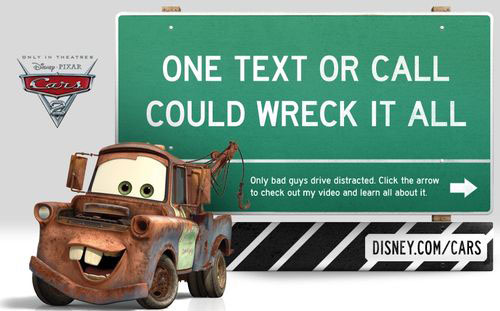
3) Car Accidents and the Aftermath:
SAFETY FIRST!
According to the National Highway Traffic Safety Administration, drowsiness and fatigue caused 1,200 fatal crashes in 2009. You can't drive safely when you are stressed, your mind is preoccupied or you are overly tired. As much as possible, 100% level of alertness while driving is required.
Nearly 500,000 are injured yearly due to distracted driving. In 2012 texting and talking on the cell phone while driving caused 3,500 fatalities in United States alone. To learn more information, please visit distraction.gov (Official US Government website for Distracted Driving)
The aftermath of an accident are loss of wages, especially when you are on long-term recovery, emotional trauma, physical incapacity, higher car insurance monthly premium, medical bills, inconvenience and the most severe is death.
Bus
| Average Car
| |
|---|---|---|
Carbon Monoxide Emission
| 89 g each bus/ .625 miles (1km)
| 133 g each average car/ .625 miles (1km)
|
inactivity Physical exercise
| 5,000 additional steps everyday can burn 200 calories daily
| Inactive individual takes an average of 1,000-3,000 steps per day
|
Mental stress
| You can nap, meditate, read and relax.
| You need presence of mind and be alert always while driving.
|
Safety
| You can text and call on your celphone
| Drive Safely! Don't text or use your celphone.
|
Comparative Table on the 4 Health Benefits using bus versus the average car
Solutions
The choice between taking the bus or riding with the high prices of gas depends on you. It is time to weigh in which is more expensive to give up. Is it your environment, health, safety, work, income or $1.50? Your options should both consider your monetary advantage and the non-monetary benefits.
Let me acknowledge the three advantages of using your car to commute. These are speed, convenience and comfort.
Three Advantages of using your car:
- Speed - You reach your destination faster with your car. The bus have frequent stops and its speed limit is slower than your car.
- Convenience - You control your trip's time and schedule. On the other hand, bus trips are scheduled by the bus company. During rush hours, there are more buses plying your route. After rush hours, the schedule gap becomes wider.
- Comfort - Your car's seat is waiting for your anytime. You do not ride with passengers that are strangers to you.
We can't change our lifestyle drastically. Many of us are not ready to give up speed, comfort, convenience totally (and that includes me). But should we also keep on paying expensive gas, contribute to global warming, increase our stress level and keep being physically inactive? Let's meet halfway. Here are 5 suggestions:
5 Suggested Solutions:
- Carpool - The direct benefits of carpooling are: A) it saves you gas; B) It minimizes car repair or maintenance cost; C) It allows you to use the carpool lanes (HOV); D) You are not stressed out driving daily
- Park and Ride - Drive your car to the nearest parking area where your bus stop is located. Then take the bus for the rest of your commute.
- Schedule one trip to cover many appointments - To conserve gas and energy, create your schedule to cover one area at a time. Example: On Mondays all your trips are on the east side of the city; Tuesdays on the west side; and so on.
- Live closer from work - Nothing beats working closer from home.
- "Let's meet halfway" - Ask the other person if he can meet you halfway. If he says NO, hmm you might consider he read this article first!
Next time when you commute, consider your health not just your wealth. We have only one life and one earth to live. If you don't have any pressing and valid reason to drive your car around, please take the bus!
Let us know!
What have you decided now to do?
Copyright © 2012 The Girls. All rights reserved. Reproduction in whole or in part in any form or medium without permission prohibited.
Other Articles by Author:
- 4 Easy Tricks To Save Money Everyday!
How did the economic recession affect our lives? Saving money now is more important than ever before. These 4 ordinary ways to save everyday is effective, without a doubt. - 6 Simple Ways to Teach Your Kids How To Earn And Save Money: How Much Do You Get Recycling Water Bot
Different ways teach your child on earning and saving money. How can children make money from home. - 4 Steps to Budget your Paycheck Effectively: Use My Advice with How Much Money You Have Today!
Effective budgeting with the 4 Steps to Budget your Paycheck. Manage your money and learn to save! - Why You Need to Get Hurt to Change: Is it needed to grow emotionally?
Having good relationships with people by becoming a better person first. Being mature in life spells a big difference in your relationship. - A Memorial of World War II in Leyte, Philippines
World War II in Leyte, Philippines. War history and landmarks. - How To Help A Parent with Alcoholism (Where To Find A Good Rehab): My Dad Is An Alcoholic and He Liv
Alcohol addiction and rehabilitation center. Helping my father cope with the disease of alcoholism.
References:
Dumaine, B. (2012 February 27). Closer look: Rethinking the war on cancer. Fortune magazine 165, 14-16.
FirstGroup plc (n.d.). Benefits of Public Transport (Defra 2007). Retrieved February 29, 2012 from http://www.firstgroup.com/corporate/csr/environment_and_climate_change/benefits_of_public_transport.php
Jones, H.K. (2010). Fitness first, Weight-loss work out know-how. In R. Ellis (Ed.), Drop 5 lbs the small changes, big results diet. New York, NY: Hearst Books ISBN 978-1-58816-786-6
Murphy, J. (2008). The Power of Your Subconscious Mind, In A. Pell (Ed.). New York, NY:Prentice Hall Press ISBN 978-0-7352-0431-7
National Oceanic and Atmospheric Administration (2012). What the world needs to watch. Earth's CO2 home page. Retrieved March 5, 2012, from http://co2now.org/Current-CO2/CO2-Now/earths-home-page-for-atmospheric-co2.html
Volti, R. (2004). Cars and culture. The life story of a technology. Westport, CT: Greenwood Press ISBN 0-313-32831-5
Wisconsin Department of Health Services (April 2011). Chemical Fact Sheets: Carbon Dioxide. Retrieved March 1, 2012 from http://www.dhs.wisconsin.gov/eh/ChemFS/fs/CarbonDioxide.htm
1) Photo courtesy from Disney and Pixar's movie Cars 2. Retrieved on March 5, 2012 from http://fastlane.dot.gov/2011/06/cars-2-distracted-driving-psa.html




